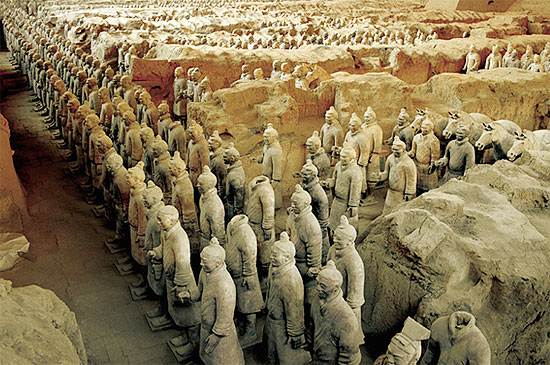
Lukas Nickel, professor at the School of Oriental and African Studies at the University of London, wrote that “it is possible and actually likely that the sculptures of Qin Shi Huangdi were the result of early contact between Greece and China.” Before his time, life-size sculptures were not built-in China so the idea to build so many of them came from Asian areas that had been influenced by Alexander the Great during his campaigns.
An old translated tale speaks of 12 “giants” that appeared in the west. The Emperor was so impressed by those giant sculptures that he attempted to recreate them. Those first attempts to follow the western model of sculpturing were destroyed. The Terracotta Warriors however were buried in pits and survived after all those years.
Nickel notes that while examining the sculptures it is evident that an attempt to capture the body in motion was made by the artists. “This comes close to an understanding of the human body that was at the time only employed in Hellenistic Europe and Asia.”
After the First Emperor’s death people stopped building the human-like statues for many reasons. A lot of the people skilled enough to make them died of old age. Furthermore, a historian of the Han Dynasty wrote about a “heavenly taboo” that would bring disasters to anyone following foreign models of life and art.
See all the latest news from Greece and the world at Greekreporter.com. Contact our newsroom to report an update or send your story, photos and videos. Follow GR on Google News and subscribe here to our daily email!



